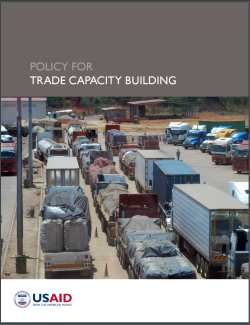USAID’s Trade Capacity Building Policy outlines the Agency’s approach to trade capacity building activities and highlights the critical linkages between trade issues and development programming, and calls for a greater level of cross-sectoral integration and coordination.
The policy updates USAID’s first Trade Capacity Building Strategy published in 2003 and provides guidance for field personnel in lieu of a funded programming strategy. The new policy updates the previous strategy by continuing the focus on implementing trade agreements, facilitating trade flows and enhancing economic responsiveness. However, the world has changed and the nature of trade has evolved and so the policy takes into account the changing environment that includes the e-commerce boom, expansion of trade in services and the dispersion of production across multiple countries with integrated Global Value Chains. It also addresses other evolving factors such as increasing regionalism, the increasing numbers of international trade agreements, as well as the greater focus on environment, labor and gender matters, and the greater role of the private sector.
The Trade Capacity Building Policy is consistent with the Bipartisan Congressional Trade Priorities and Accountability Act of 2015 (also referred to as Trade Promotion Authority) and the Trade Preferences Extension Acts signed by President Obama on June 29, 2015.
Document

